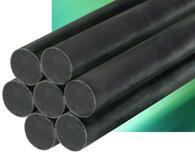Conventional wisdom has it that carbon capture and storage (CCS) is too expensive to be deployed widely. The existing approaches are technically complex and have not yet grown out of the demonstration stage into commercially viable applications. A 2013 report by the Global CCS Institute found that the number of large-scale CCS projects dropped from 75 to 65 worldwide. CCS could play a big role in reducing Canada's carbon footprint if it could be deployed in Alberta's oil patch or for retrofitting coal power plants.
Technologically, there are three main approaches to carbon capture: pre-combustion, post-combustion, and oxy-fuel. The pre-combustion and oxy-fuel methods are only suitable for new coal power plants, while post-combustion "scrubbers" are used for extracting carbon dioxide from a flue gas stream that has already been cleaned from particulate matter and sulfur dioxide. Conventional post-combustion methods rely on a chemical solvent, usually amines. Pre-combustion methods separate the carbon and hydrogen in the fuel; the hydrogen can be burned cleanly, and the carbon dioxide is captured. And with the oxy-fuel approach, coal is burned in pure oxygen rather than air, which allows pure carbon dioxide to be captured after combustion. However, extracting oxygen from air is costly due to energy-intensive liquefaction. In a 2011 study by the International Energy Agency, Cost and Performance of Carbon Dioxide Capture from Power Generation, Matthias Finkenrath put the cost of carbon capture at about USD 55 per tonne of CO2 captured. This makes it expensive compared to alternative methods of reducing carbon emissions, including many sources of alternative energy. So is there any indication that the cost for carbon capture could drop significantly below the $55 mark in the future?

Enter Inventys Thermal Technologies, a small up-start company based in Burnaby, British Columbia. This entrepreneurial company is pioneering a new post-combustion process called temperature swing adsorption (TSA). The technical idea behind this process is the use of a physical adsorbent (pictured on the right) in lieu of a chemical adsorbent. The use of a chemical adsorbent (amines) is energy-intensive and thus expensive. Physical adsorption has the prospect of being much cheaper. The technology pioneered by Inventys is a cousin of another physical adsorption method known as pressure swing adsorption (PSA). Temperature swing adsorption uses temperature changes to release adsorbed carbon dioxide, whereas PSA uses pressure to drive off the adsorbed gas. TSA is generally less expensive than PSA. To reduce costs further, Inventys has developed a new adsorbent material that is particularly efficient at trapping carbon dioxide while letting nitrogen and steam pass through. Once the adsorbent is saturated with carbon dioxide, the adsorbent is regenerated with steam. Making this trap-and-release process work rapidly is key to making the process efficient. The exact composition of Inventys's adsorption material is a trade secret, but reports in science journals suggest that the trick to improve efficiency involves lacing the contact material with amines.
‘Inventys is satisfying an existing and growing demand for CO2 and does not rely on government subsidies for its success.’
Inventys claims that this new technology reduces the cost of carbon capture to one-third of other carbon capture systems, about USD 15 per tonne of CO2. This would make carbon capture cost effective—a significant breakthrough and a big leap forward in our technological ability to mitigate climate change. The company also has a realistic eye on the market for carbon capture. Capture alone is not enough. Once captured, the carbon dioxide needs to be sequestered—or used. Inventys targets the Enhanced Oil Recovery (EOR) industry because CO2 can be injected into aging oil wells to increase the reservoir pressure that forces the oil up the well. Thus, existing oil reservoirs can be exploited more efficiently. Inventys is partnering with several oil companies, including Suncor Energy, to develop the process at a commercial scale. By targeting EOR, Inventys is satisfying an existing and growing demand for CO2 and does not rely on government subsidies for its success, as Jeffrey Jones reported in the Globe and Mail this week. There is great potential that Inventys may become a leader in carbon capture, and one may hope that this company is a British Columbia success story in the making.
That the company is up to something big was signaled by the high-profile arrival of Dr Steven Chu on the company's board of directors last December. Steven Chu was Secretary of Energy in the Obama administration from 2009-13. It may also come as no surprise that the company's co-founder, CEO, and co-inventor of the TSA technology, André Boulet, is a UBC graduate in chemical engineering. Keep your eyes on news about Inventys.
![[Sauder School of Business]](logo-ubc-sauder-2016.png)
![[The University of British Columbia]](logo-ubc-2016.png)